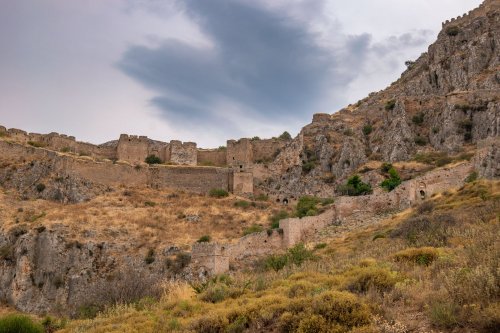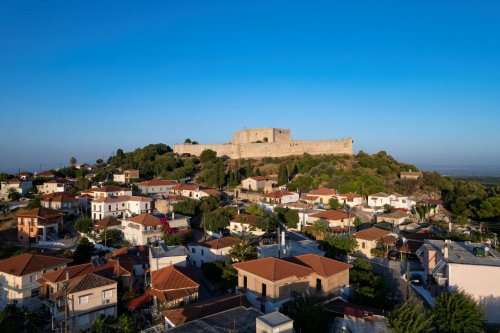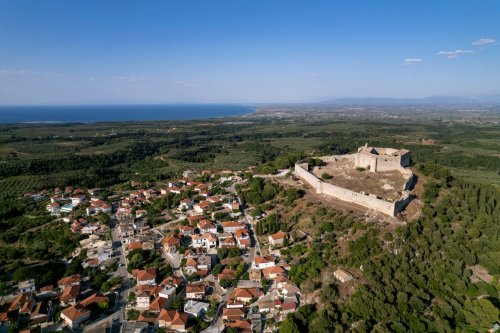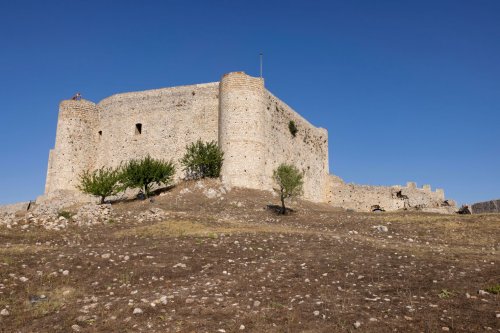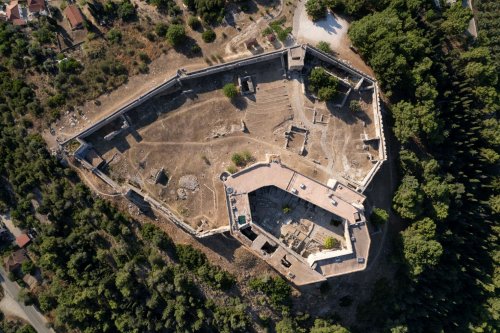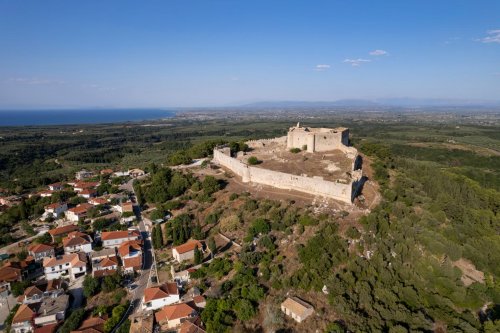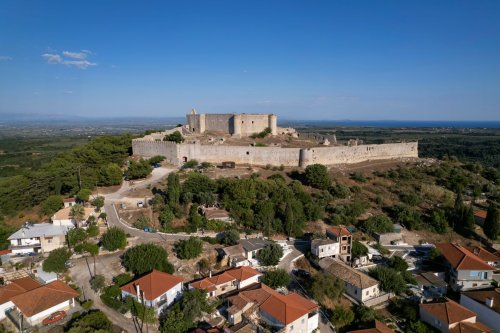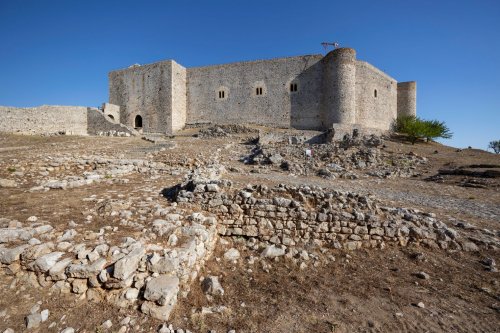7 magical castles of Peloponnese
3 days in 7 magical castles of Peloponnese
Have you ever thought how little do we know about the Middle Ages in Greece?
About the time when castles were built, alchemists were searching for the elixir of youth, kings and knights were writing histories on which later the fairytales would be based. It is a time that we know very little about.
The castles of Peloponnese are the only reminders that all these were not just in the historical books of Western Europe, but also right here next to us, between our ancient temples and the beaches that we go diving in summer.
Isn’t it a pity that we don’t often talk about them, and that most people only know Palamidi, Mystras and Monemvasia from all the castles of Peloponnese?
So, shall we change that? We’ll start from the castle of Corinth.
Akrocorinthos castle
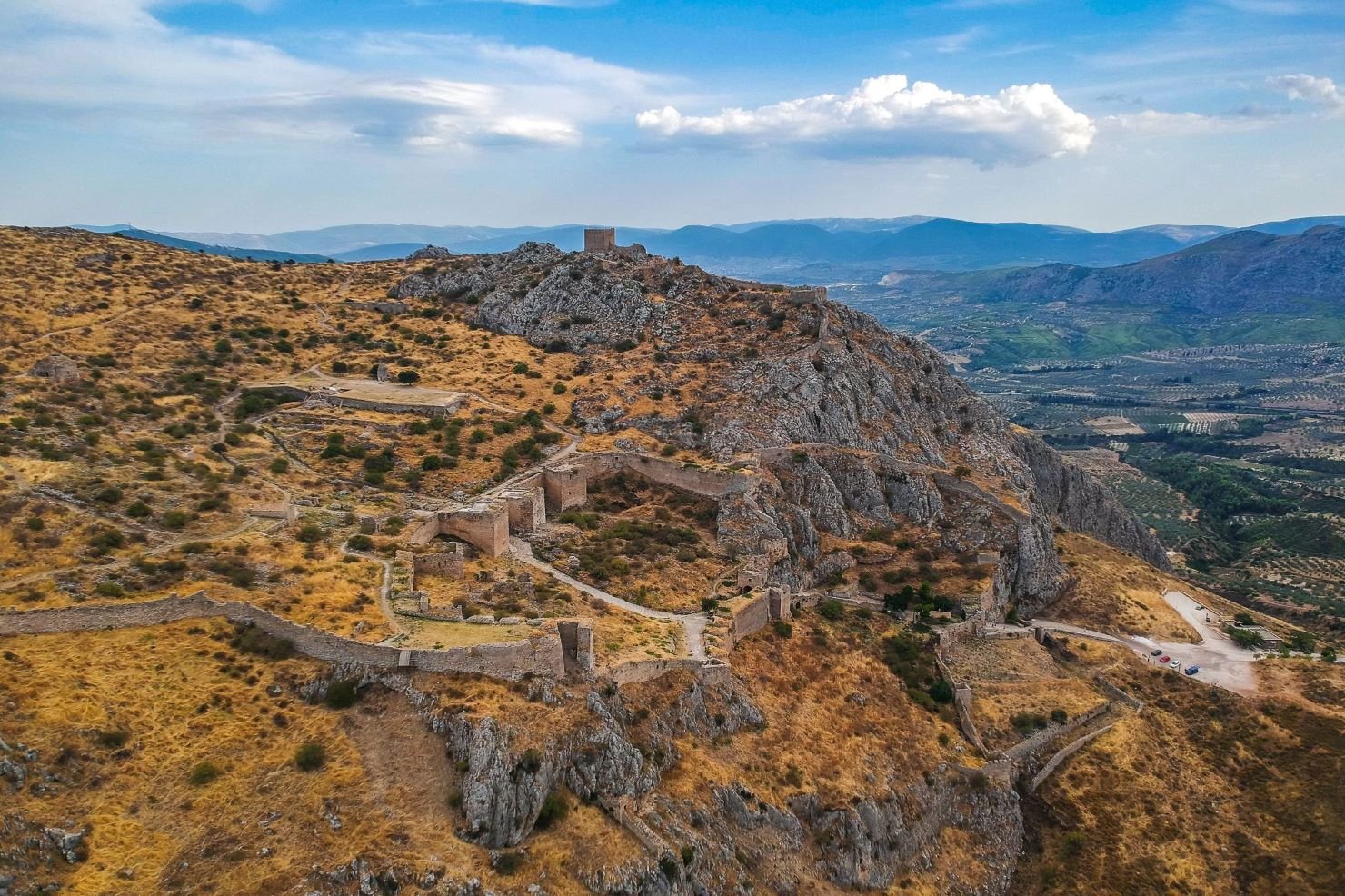
The biggest castle of Peloponnese is, according to myth, the work of Sisyphus, king of Corinth, who happened to see Zeus with Aegina doing things that the beautiful girl’s father wouldn’t approve.
Also her father was an important river god, Aesop. So Sisyphus didn’t lose any more time and went to the worrying father and promised him to reveal where Zeus and his daughter are, on one condition: He needed water on his castle.
In this way Akrocorinthos became a mighty castle-city- since there are no cities without water- and within three millennia it passed by so many hands that it’s hard to classify it as Byzantine, Venetian, Ottoman or anything else in particular.
It is all of these together, and a category in itself.
Its medieval history includes the Franks, the Byzantines, the Venetians and the Ottomans, and there is even a short joke saying that there was once Theodor Palaeologus, of the well-known family, who run out of money and needed to liquidate something immediately so he found the richest people in Europe, the knights of Malta, and sold to them… the Akrocorinthos.
However, the locals didn’t like it and threatened Theodor with uprisings, who eventually after nine years had to pay the knights to sell it back to him.
Nowadays, Akrocorinthos is one of the nicest- and definitely the biggest- castles you’ll ever visit. You will have to consider that it needs at least two hours, and a lot of climbing, to see it all.
It is daily open from 8:30 to 16:00, with free entrance, and enjoys an amazing view to the entire Corinth from the top of its 579-meter hill.
You must visit 6+1 wonderful shops to do your shopping in Ancient Corinth
You can find more about Ancient-Corinth here
¦
¦
![]() 126 kilometers
126 kilometers
![]() 1 hour and 20 minutes of driving
1 hour and 20 minutes of driving
¦
¦
Rio’s Castle
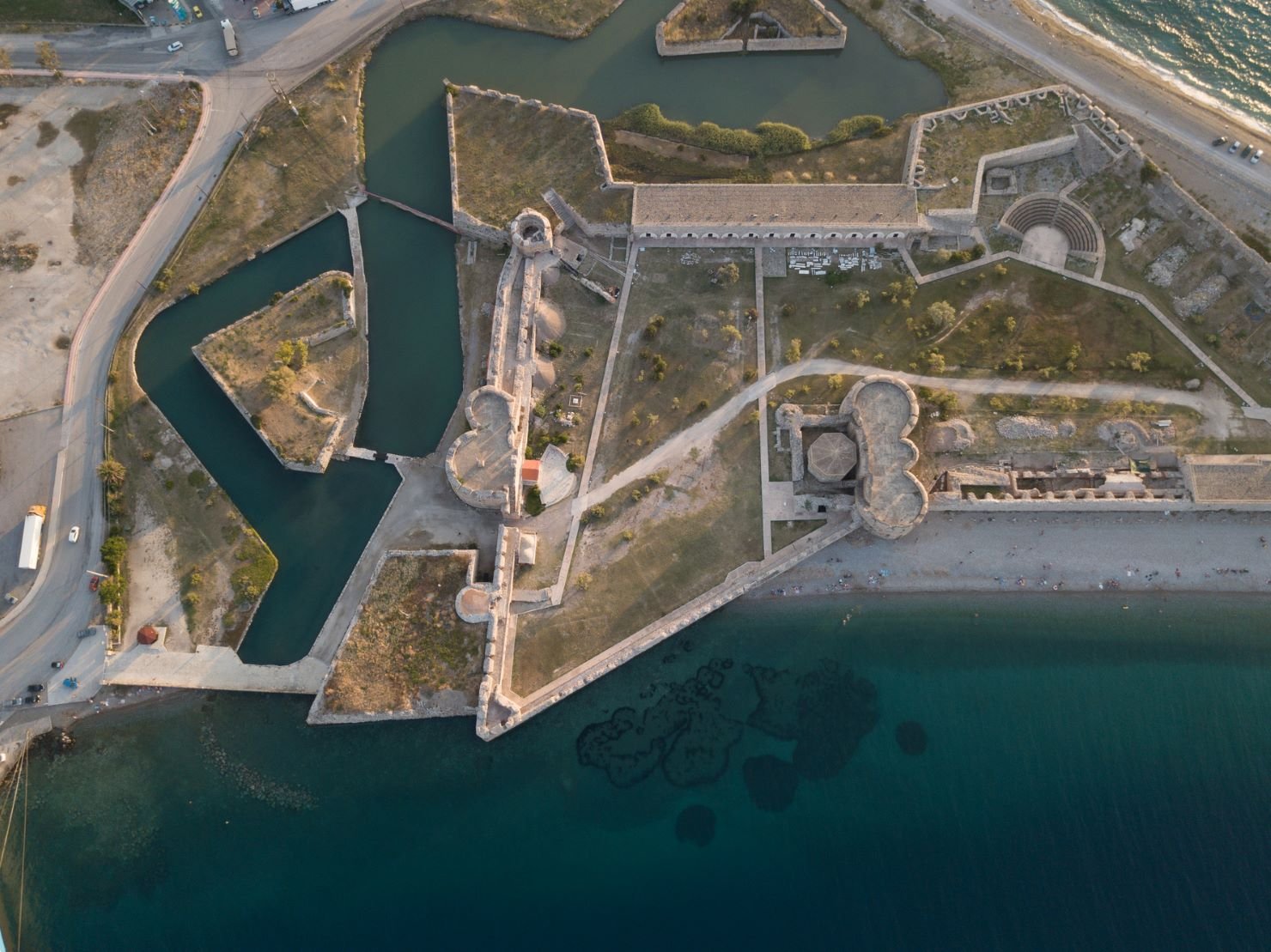
The Ottoman Sultan, Vayazit II, was mostly known for two things: Firstly, he saved the Jews that Ferdinand and Isabella expelled from Spain, and secondly he made peace with the eternal enemies of his empire, the Venetians. He was also the grandfather of Suleiman the Magnificent.
The “Casteli of Morea” that was built in 1499 at Rio, along with the Casteli of Rumeli at Antirio, is today one of the most well-preserved Ottoman castles we have in Greece.
Rio’s Castle is protected in three sides by the sea (even its moat fills with sea water to this day), it has two gates, the land gate and the sea gate, and along with the Castle of Antirio they were closing the entrance of the Corinthian Gulf so well that the Ottomans used to say that “not even a bird can fly between them”.
The Castle of Rio is visitable, and it is right next to the famous Rio-Antirio Bridge.
It is open every day, except Tuesday, from 8.30 to 16.00 and it has an entrance fee of 2€.
Ten kilometers away is Patra, the ideal option for the first overnight stay of our trip.
¦
¦
![]() 89 kilometers
89 kilometers
![]() 1 hour and 5 minutes of driving
1 hour and 5 minutes of driving
¦
¦
Chlemoutsi Castle
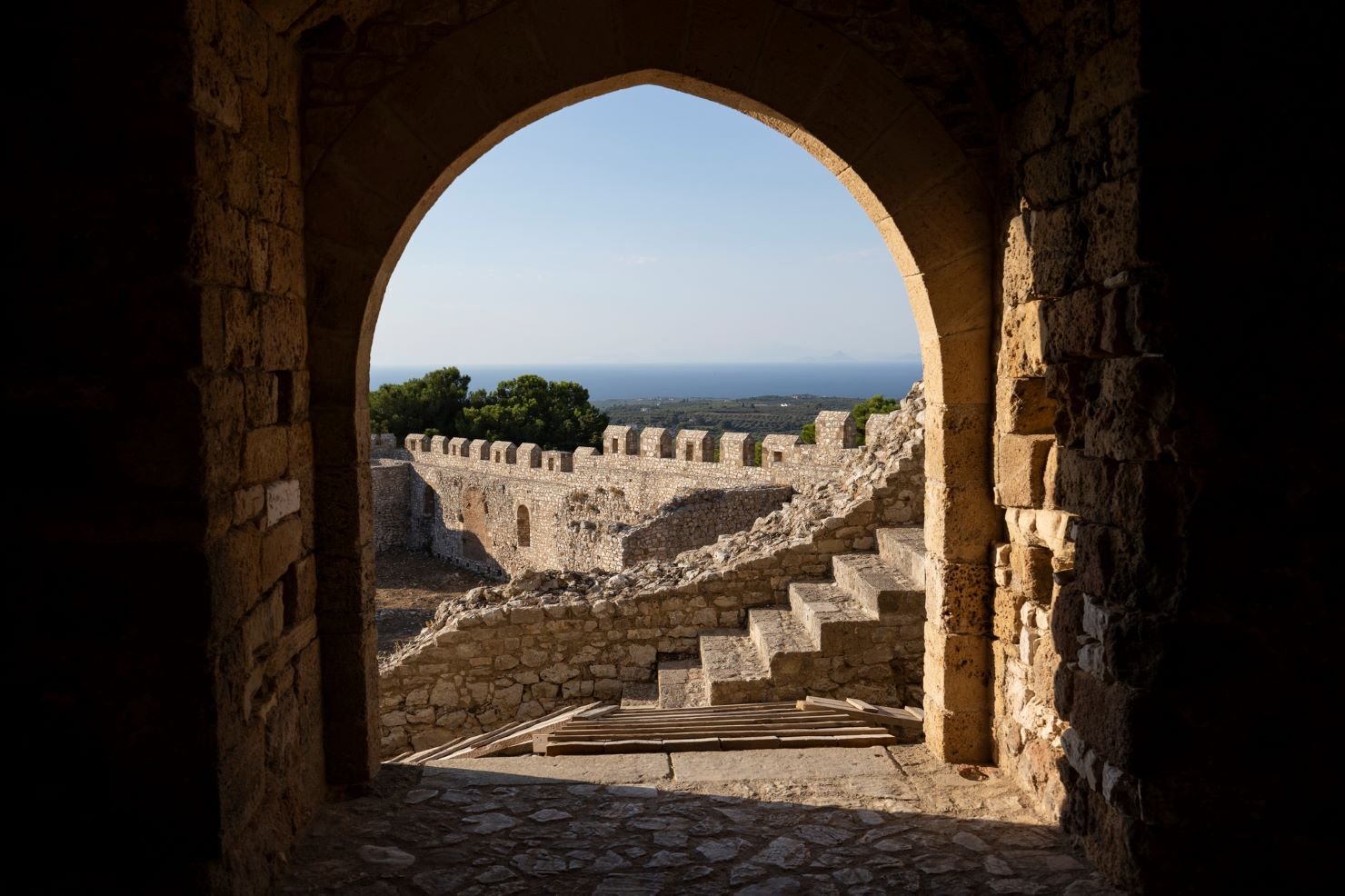
Geoffrey of Villehardouin was a Frankish knight of one of the most famous crusades, the Fourth Crusade, during which Istanbul was destroyed in 1204.
A year later he became the first Prince of Achaia, starting in this way the 200 years of the Frankish rule in Peloponnese.
Geoffrey, as it is referred in the Morias Chronicle (a pleasant narration in medieval Greek of how all those castles were built, it was written in the 14th century but we don’t know who wrote it), took money from the Church, who excommunicated him for this, and with those money he built a masterpiece castle near Kyllini. He named it Clermont.
We definitely agree that this chic name version suits it better than its unfortunate corruption.
Chlemoutsi is the biggest castle that the Franks built in the Balkans and the most exquisite sample of their architecture that we have in Greece.
It is very well-preserved, compared to the most castles of Peloponnese and enjoys a fantastic view to the entire plain of Ilia and to the endless turquoise of the Ionian Sea.
It is visitable every day, except Tuesday, from 8.30 to 16.00 and has an entrance fee of 4€. At nights, it is magically lit.
¦
¦
![]() 156 kilometers
156 kilometers
![]() 2 hours and 28 minutes of driving
2 hours and 28 minutes of driving
¦
¦
Niokastro
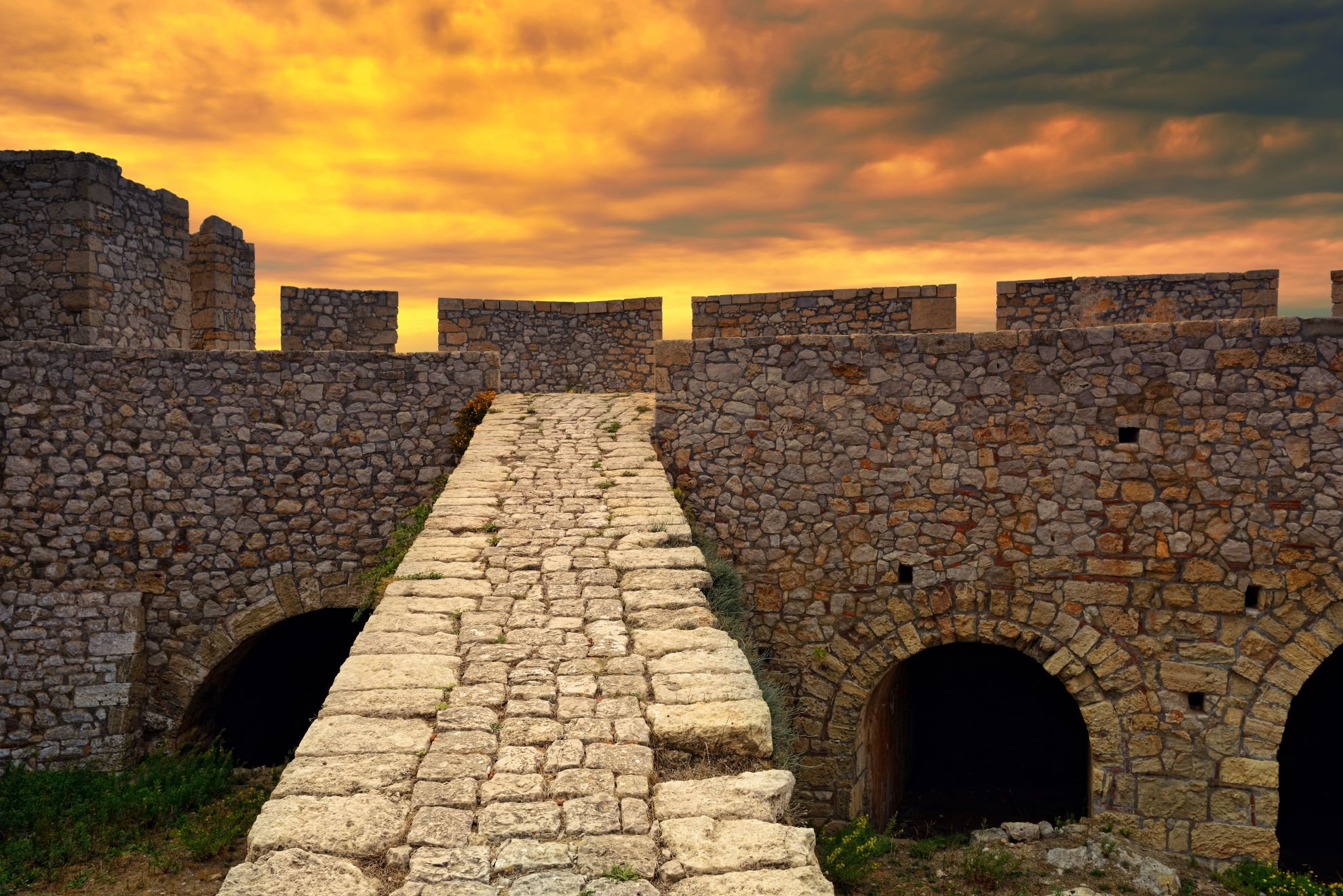
After the Franks, we go back again (actually, we’re moving forward) to the Ottomans.
So, the Ottomans had a fleet that had never lost a battle since their empire’s foundation in 1299 and for the next 272 years.
However, no one is invincible, and at some point their pay day came and in 1571 they not only lost, but they were also completely debacled in the Battle of Navarino.
Two years later they founded the Niokastro Castle of Pylos to protect themselves and avoid any future destructions. In this way, they left us as legacy one of the nicest castles of Peloponnese.
The Niokastro Castle houses today the Archaeological Museum of Pylos, as well as other buildings that have been restored or saved in good condition.
The entrance fee costs 8€ and the opening hours in summer are 8.00-20.00.
Pylos that spreads at the “feet” of the castle is an excellent choice for the second overnight stay of our small trip.
¦
¦
![]() 52 kilometers
52 kilometers
![]() 1 hour and 5 minutes of driving
1 hour and 5 minutes of driving
¦
¦
Androusa Castle
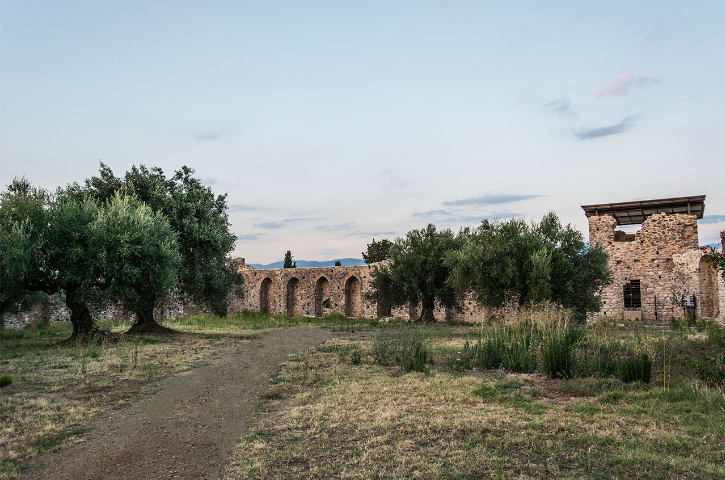
Have you ever heard of Navara? It is located north of Spain on the map, right next to Basque Country. In the History of Peloponnese you can find it at the Castle of Androusa, since 1381 and for the next thirty-something years.
So, how the Navarians have been brought up here you may ask? They were mercenaries that you could find them everywhere in Europe during those years.
In Peloponnese they were brought by Ioannites Knights and kept here by various coincidences and twists of fate, through which they managed to get the Principality of Achaia from the Franks.
Androusa, which was built in 1250 by the son of Willem Villehardouin, was their base.
Nowadays, Androusa Castle is maintained with its towers and its impressive arches in relatively good condition.
It is visitable without a ticket fee and without opening and closing hours.
It is located at the Androusa village, 22 kilometers away from Kalamata.
¦
¦
![]() 127 kilometers
127 kilometers
![]() 1 hour and 49 minutes of driving
1 hour and 49 minutes of driving
¦
¦
Geraki Castle
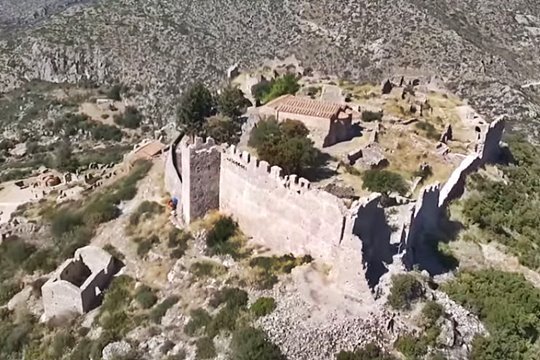
On September 1259 there was a big battle, the Battle of Pelagonia, indirect consequence of which was for the Byzantines to take back Istanbul two years later.
The Franks, as you might have guessed, were fighting the Byzantines. Willem Villehardouin was taken as prisoner, and in order to be set free he gave to Iohannis Palaeologus along with his most important castles (Mystras and Monemvasia) this one too, the small Geraki that was in them. It was also built by a Frankish Baron, Guy de Nivelet, in 1250.
The Byzantines who took it filled it with small churches, thirty of which are saved today, some of them with incredible wall paintings of the 13th and 14th century – one of the most impressive wall paintings depicts the famous story with the trumpets that tore down the walls of Jericho.
The castle is located outside the Geraki village of Laconia, and enjoys an amazing view to the Laconian plain and to the sea. Entrance is free.
¦
¦
![]() 126 kilometers
126 kilometers
![]() 2 hours and 40 minutes of driving
2 hours and 40 minutes of driving
¦
¦
Larissa Castle of Argos

The History of the Castle of Argos begins in antiquity, earlier than the 6th century B.C., when the Pelasgians built here their Acropolis.
That’s the reason we call it Larissa: Because in the strange language of the Pelasgians, Larissa means Acropolis.
The castle you see today though, is medieval- it was built by the Byzantines in the 10th century, and it was completed by the Franks in the 13th century.
Not our known Franks, the Villehardouins that we’ve mentioned in all the previous castles, but the Burgundians de la Roche family, who owned the Duchy of Athens. They reformed, with their reconstructions and additions to a great extent the castle as we see it today.
Nestled at the 287 meters of its hill, Larissa enjoys a postcard-like view to the Argolic plains, Argos and to the sea.
The entrance is free and the sunset up here seems astounding.
All the route along with the stops on the map here : https://tinyurl.com/y5jn43r8

3-5 days trip

Culture



